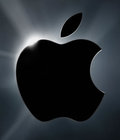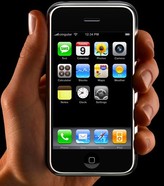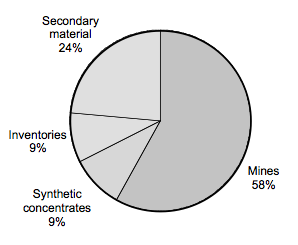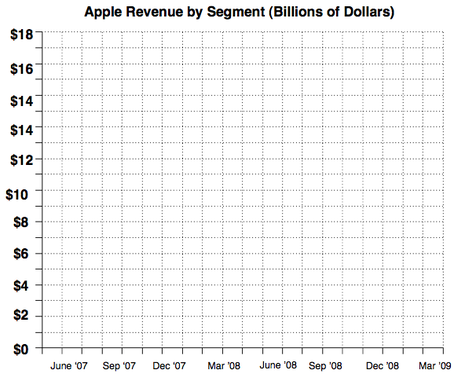
The following are articles that I have compiled concerning Apple Inc., Coltan mining, the Democratic Republic of the Congo, and the relationship between all of the above.
To begin let us define and identify Apple Inc., Coltan, and the Democratic Republic of the Congo.
Apple Inc. according to Wikipedia is an American multinational corporation headquartered in Cupertino, California, that designs, develops, and sells consumer electronics, computer software, and personal computers.
- Stock price: AAPL (NASDAQ) $628.65 -4.35 (-0.69%)
Jun 2, 4:00 PM EDT - Disclaimer - Founded: April 1, 1976, Cupertino, CA
Coltan is a metallic ore from which the very similar elements niobium, also known as columbium, and tantalum are extracted. Alloys made from these elements have a variety of uses, including communications technology, superconductors, and doping of steel. Due to niobium and tantalum’s versatility and the recent technology boom, the coltan industry has skyrocketed. Coltan has become a necessity for modern communications and therefore an indispensable and lucrative industry.
The Democratic Republic of the Congo, sometimes referred to as DR Congo, DRC, Congo-Kinshasa, Congo-Zaire, DROC, or RDC, is a country located in the African Great Lakes region of Central Africa.
It is the second largest country in Africa by area and the eleventh largest in the world. With a population of over 75 million, the Democratic Republic of the Congo is the nineteenth most populous nation in the world, the fourth most populous nation in Africa, as well as the most populous officially Francophone country.

The Story of Apple’s Dark Side
September 16, 2011
By Jason Rowley
Let’s not make any bones about it: we all love Apple’s products. They’re sleek, impeccably designed, increasingly touch-enabled and run the most solid operating systems in the business. But there is a darker side to the company, which is enough to make dedicated Apple fanboys sick. Or at least this one.
The fact of the matter is, the manufacturing and eventual disposal of our beloved iDevices is an ugly process. I’ve read about “how the sausage is made,” so to speak, and it’s not pretty. A second aspect to Apple’s operations that goes unnoticed by consumers is the company’s strict approval process which developers must go through to get their apps onto the Mac and iOS app stores.
Despite Apple’s notorious secrecy surrounding its supply chain and its “draconian” approval process, it seems strange, then, that an app like Phone Story made it onto the iOS App Store earlier this week.
The app, which consists of four minigames, each representing a different step in an iPhone’s lifecycle, “is a game for smartphone devices that attempts to provoke a critical reflection on its own technological platform.” When you think about what the app is trying to do—getting buyers to think about the ramifications of their consumption habits—there really is no choice but to be a bit pomo and tongue-in-cheek. The game’s developers have made the content remarkably engaging, in that kind of heartbreaking, “Oh My God, what have I done?” sort of way.
The games take players through each step of the iPhone’s manufacture, sale, and eventual demise. Whether it’s taking the role of a coltan miner in the congo, a safety-net holder attempting to catch people jumping off of the Foxconn plant in Taiwan, an Apple store employee trying to block rabid fanboys from getting into the store before a device release, or an impoverished eWaste processor in Southeast Asia, the games make a powerful point: a lot of human suffering goes into the production of our beloved iDevices, and Apple does a good job of hiding this misery.
Let’s take a tour through Apple’s supply chain, shall we?

Colton is the industrial name for columbite-tantalite, a blackish metallic ore from which niobium and tantalum are extracted. Tantalum is used to manufacture capacitors and other elements of electronic circuitry. For some reason, Africa once again got the short end of the stick: the majority of the world’s coltan is sourced from war-torn countries like Rwanda, Uganda and the Congo. Demand for coltan and diamonds (and, to a lesser extent, other minerals) has funded these countries’ militaries, which are in seemingly continuous conflict with each other over the region’s rich mineral reserves. Since the central regulatory authorities in the Congo have largely collapsed, mineral plunder is rampant.
There is no system to trace, audit and certify where large electronics manufacturers like Apple get their materials, so it’s possible (and likely) that devices contain conflict materials.
The parts for Apple’s devices come from a wide range of suppliers, but final assembly operations are performed primarily by the Taiwanese company Foxconn. 136 employees at Wintek, a parts supplier, claims to have sustained serious neurological damage from exposure to chemicals, including n-hexane, used on the glass screens of iPhones and iPod Touch products. Wintek paid out $1.5 M in damages, according to an article in Foreign Policy.

In 2010, an estimated eighteen Foxconn employees attempted suicide by jumping off buildings. Fourteen were successful. The cause? According to a report produced by 20 Hong Kong universities, and another by students, Foxconn employees were made to work as long as 36 hours nonstop without overtime pay, faced systematic humiliation by management, and “poverty wages”. Whether these suicides were in protest or to escape appalling working conditions is unclear.
Apple’s marketing team is one of the best in the business. How the company compels users to continuously upgrade their otherwise perfectly good, if slightly old devices could be the topic of a multivolume book. Although this isn’t so morally reprehensible on Apple’s part, the culture of disposability it creates around its products contributes to one of our world’s fastest growing and most underreported environmental and social problems: the outsourced disposal of electronic waste.
There’s no way to be upbeat about eWaste. “Tragic” is an overused term, but that’s what the problem is: tragic. Between 50 and 80% of electronic waste collected in the US is exported to developing nations for processing and “recycling”. There are no federal laws to regulate eWaste.
Electronic devices contain a wide array of valuable metal components, from the gold contained in processors and other chips to the copper wiring connecting the circuits together.
I forgot where I heard this on NPR, but it sticks in my mind: There are whole towns in southeast Asia whose economies depend on eWaste recycling, which is a surprisingly low-tech process. The journalist who produced this radio piece reported seeing stacks of Apple laptops arriving in this village, watching whole families—young children included—literally breaking apart these laptops with hammers to get at their valuable guts, observing chip boards being dipped in caustic baths to dissolve the silicon substrate to more easily get at the gold-containing electronic components. She noted that instead of stripping copper wires of their PVC coatings, which would be prohibitively time consuming, wires are heaped like hay stacks, summarily doused with gasoline and burned, leaving the copper wire liberated from its plastic insulation while emitting clouds of noxious, dioxin-bearing smoke, which is heavy and settles like a fog around the village.
Guiyu, in China’s Guangdong Province is the largest eWaste site on earth. (For an idea of the scale, there’s an awesome Time photo slideshow on Guiyu) The water and soil in this region is so contaminated, it is unfit even for agricultural use. Using dust samples, scientists analyzed mean heavy metal concentrations in a Guiyu workshop and found that lead and copper were 371 and 115 times higher, respectively, than areas located 30 kilometers away. The nearby Lianjiang River has 300% of the allowable PCB contamination.
Guiyu is the world’s second-most contaminated location. 88% of workers suffer from neurological, digestive, respiratory and skin disease—most cases of which are unique to the region. The heartbreaking story of Guiyu is played out in hundreds of villages in Asia and Africa, where environmental regulations are either lax or nonexistent.
Apple has been “unusually” committed to the environment, but most groups contend that their efforts are insufficient. Whether it is making greater demands from its suppliers, setting up more recycling facilities in countries with better regulations, or perhaps even using its vaunted position in the consumer electronics market to lobby for increased oversight, Apple could be doing a lot more than it already is. It could reengineer products to be more easily repaired, establish trade-in programs with discounts as an incentive, or send outdated, fully-functional iDevices to the third world, where shoddily-built devices contribute to the eWaste stream. Does the company do these things? No. Will it? Unlikely.
Despite my quasi-obligation toward objectivity in journalistic venues, I’m just going to say that as a longtime buyer of Apple’s products, I sit behind my Apple Keyboard and my iMac literally feeling queasy. As an Apple shareholder for the past few years, I am truly disgusted by the realization that the share price’s meteoric rise is due in no small part to the company’s continued partnership with its overseas suppliers, the hype the company fuels, and its failure to expand its recycling program.
There are other things I didn’t mention, like how the unibody construction of nearly all the company’s products prevents the easy replacement or repair of broken components, forcing owners to relegate otherwise functional products to the scrap heap. Wouldn’t it be nice if users could upgrade their iPhone’s processors as easily as it once was to swap out SIM cards? But I won’t mention this.
Like a once-devout religious person being overcome by anger at the obsequious, unquestioning devotion of his or her faithful compatriots, I am most angry at Apple’s devoted fan-base. They have—no… We have become the creepy blue-grey masses from the 1984 Super Bowl commercial, and while I admit that Phone Story was a valiant if wildly insufficient attempt to break us out of our iTrances, it’s going to take a lot more than that. Personally, I’m a nihilist on these matters; I don’t think Apple will change. I don’t think Tim Cook is the hammer-carrying runner in the bright orange shorts.
I don’t think Apple is going to use its position as the world’s largest electronics manufacturer to affect any change to this unspeakably complex and ultimately broken system. I believe that because it is difficult from a consumer’s perspective to admit to being complicit in systematic environmental and human rights abuses, to in turn demand change, consumers will tend toward willful ignorance, the status quo. We aren’t brave enough to bite the hands that feed us.
The fact of the matter is, every single iDevice owner needs to don those shorts. God forbid, we might even start acting like Microsoft customers and—gasp!—complain. We need to Think Different, as it were.
Apple pulled the “anti-iPhone” game from the App Store just hours after its release. The proceeds from the app went to not-for-profits and community organizers. It is available on the Android app marketplace.
If you are interested in learning more about the issues discussed in this article, please go to the app’s web site.
**********************************
| Apple and the Democratic Republic of the Congo |






